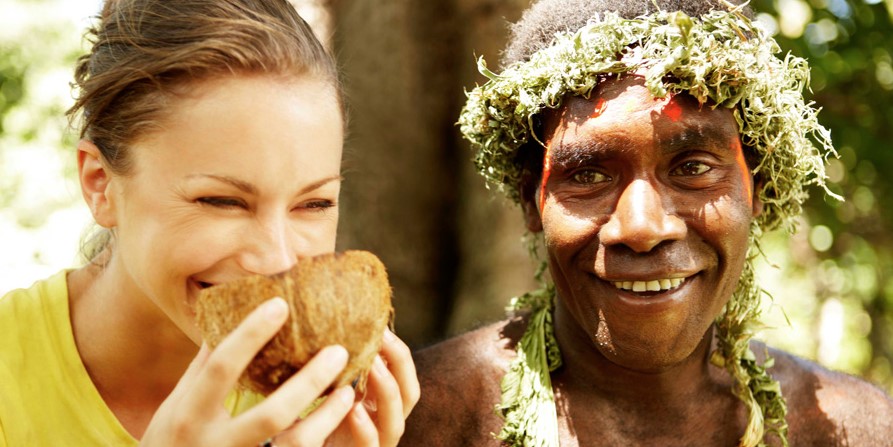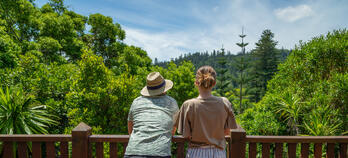
To the unknown traveller, the islands in the South Pacific may seem similar. From the charming locals, calm ocean waters and beautiful white sand beaches, each can seem the same on a surface level. However, despite operating as one united paradise, the South Pacific is divided into three different cultural regions: Polynesia, Micronesia and Melanesia. Being the closest to our eastern coastline, a visit to Melanesia should be on every Australian's bucket list.

An arch of nations, this spectacular area stretches from Papua New Guinea all the way down to Fiji. Encompassing other island countries such as Vanuatu, the Solomon Islands and the French Provincel of New Caledonia, Melanesia is separated from eastern parts of the Pacific by the Andesite Line - a geological feature with intense volcanic activity. This separation might explain the slight differences that Melanesians share with their Polynesian neighbours.
Historically, the 'Big Man' or leader of Melanesian communities was not just selected by blood, but was an ambitious chief, capable of leading his tribe. Differing from their Polynesian siblings, the Big Man became a leader by commanding their clan's attention and respect; creating followers based on their skills, generosity, bravery and magical powers. In return, a statue was erected in the Big Man's honour, garnering a vibrant ceremony of music and dance that can still be witnessed in the area today.
Two types of dance exist in Melanesian cultures: dances of participation and dances of impersonation. The latter refers to dancers portraying their mythical ancestral beings; think of huge, decorated masks, dazzling costumes and stunning bodypaints - this is how the dancer represents the role of their non-human idols. While wearing these beautiful and elaborate costumes, dancers are often confined with their movements; stomping melodically to the Melanesian drums and instruments that represent their ancestors' voices.
Dances of participation are not restricted to their movement as they join in on these dramatic ceremonies. Rather than impersonating spirits, dancers traditionally celebrate acts such as head-hunting, fertility, war and funerals – event’s that are central to the community’s everyday life. These dances are more spontaneous in nature, creating a rhythmic environment to the clan's communal singing and drumming. Based on belonging, this shared experience strengthens the bond of their communities.
Although the role of chiefs and 'big men' has waned today, the central role of reciprocity is still prevalent in Melanesia. In the past, labour and food were freely shared, in the expectation that the favour would be returned in the future. This created a generous and friendly culture, still prevalent in modern times; a visit to Fiji, with a welcomed exclamation of 'Bula!' is a true testament to their giving spirits.
Despite Western influence, many parts of Melanesia's core roots can be seen today. From their natural friendliness, traditional music and elaborate dancing, a visit to this area is a must for the cultural traveller.
Experience Melanesian Culture with Spacifica Travel:
As specialists in the South Pacific region, the team at Spacifica Travel can help you plan and book the perfect Melanesian experience. Give us a call on 1800 800 722 to speak to a South Pacific expert today.



